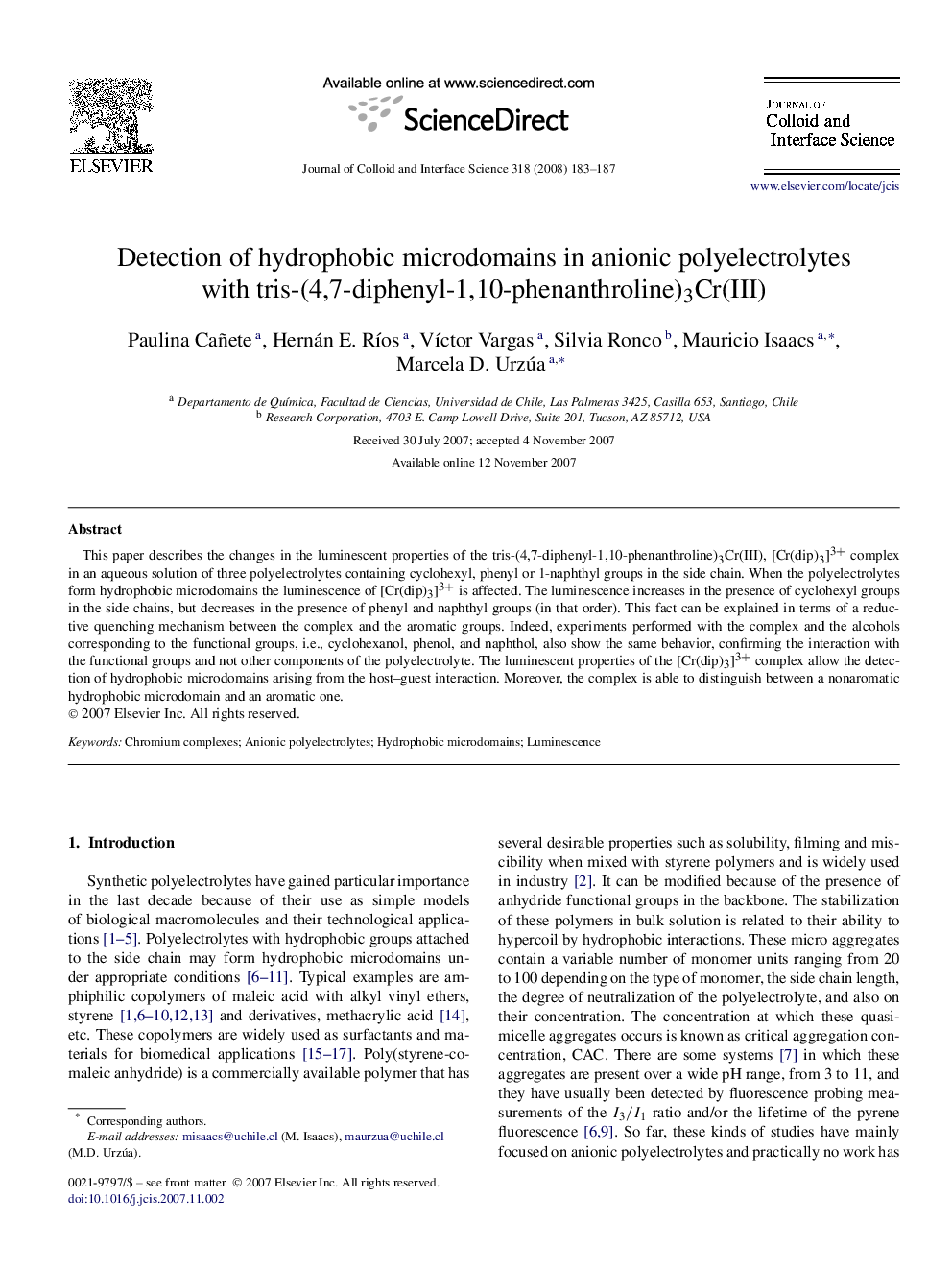| Article ID | Journal | Published Year | Pages | File Type |
|---|---|---|---|---|
| 611359 | Journal of Colloid and Interface Science | 2008 | 5 Pages |
This paper describes the changes in the luminescent properties of the tris-(4,7-diphenyl-1,10-phenanthroline)3Cr(III), [Cr(dip)3]3+ complex in an aqueous solution of three polyelectrolytes containing cyclohexyl, phenyl or 1-naphthyl groups in the side chain. When the polyelectrolytes form hydrophobic microdomains the luminescence of [Cr(dip)3]3+ is affected. The luminescence increases in the presence of cyclohexyl groups in the side chains, but decreases in the presence of phenyl and naphthyl groups (in that order). This fact can be explained in terms of a reductive quenching mechanism between the complex and the aromatic groups. Indeed, experiments performed with the complex and the alcohols corresponding to the functional groups, i.e., cyclohexanol, phenol, and naphthol, also show the same behavior, confirming the interaction with the functional groups and not other components of the polyelectrolyte. The luminescent properties of the [Cr(dip)3]3+ complex allow the detection of hydrophobic microdomains arising from the host–guest interaction. Moreover, the complex is able to distinguish between a nonaromatic hydrophobic microdomain and an aromatic one.
Graphical abstractThe luminescence of a chromium(III) polypyridyl complex is strongly affected when it is in solution of three different anionic polyelectrolytes. These changes are useful to distinguish between nonaromatic and aromatic hydrophobic microdomains in the polyelectrolytes.Figure optionsDownload full-size imageDownload as PowerPoint slide
